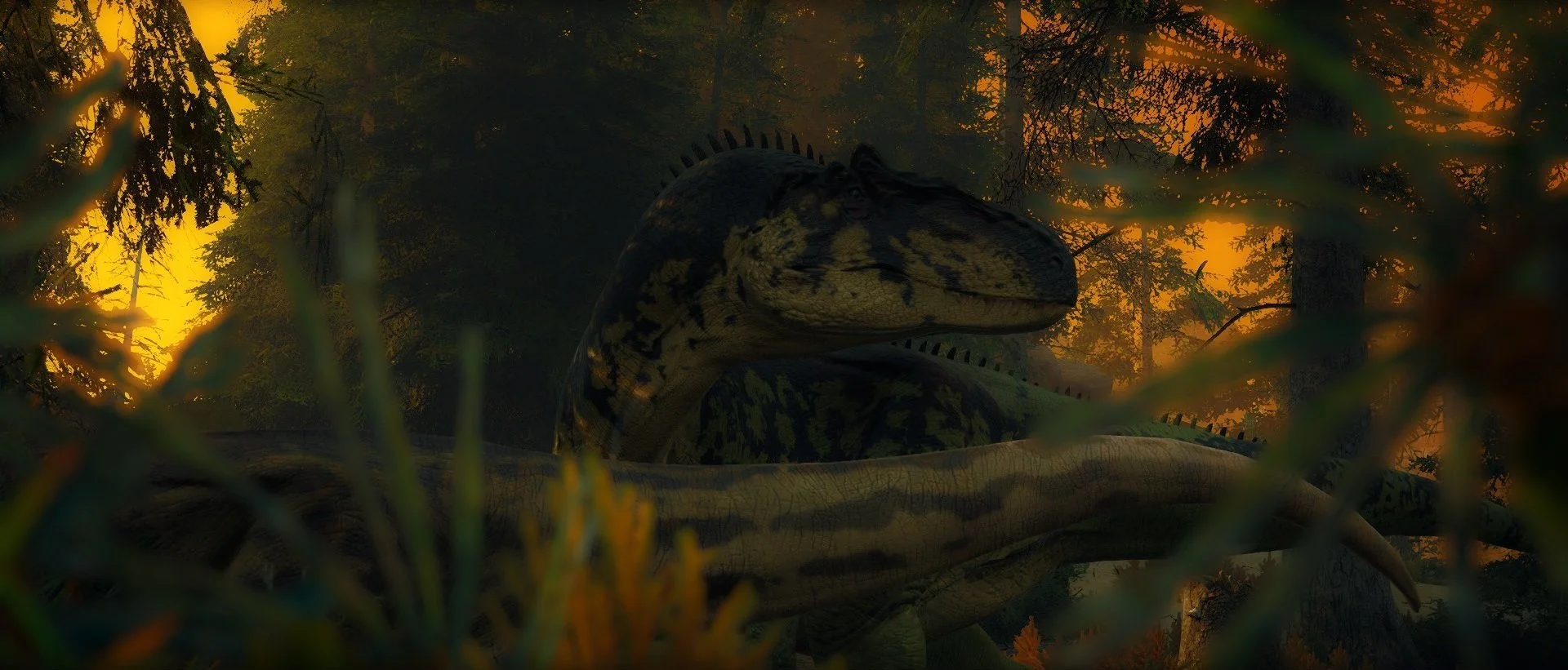Deinonychus
Tier: 1
Type: Terrestrial carnivore
Passive growth time: 1 hr 43 min
Pack size: 10 sub adults/adults, 1-20 juveniles/adolescents
Hierarchy: Decentralized
Mating bond: Polygynandry
Nest size: 1-5 offspring per pair
Diet tags: Carnivore, semi-cannibalistic, opportunistic, scavenger, insectivore & ovivore
Preferred food: Tier 1-2 carnivores & herbivores
Species specific rules: If they have at least 5 sub adults/adults, they can also hunt Tier 3-5 herbivores & carnivores. If they have at least 8 sub adults/adults, they can also hunt Tier 6 herbivores & carnivores.Behavior
They are perhaps the most chaotic creatures we have come across. Everything about them is fast and seemingly disorganized. By nature Deinonychus are intolerably curious. They are in essence the eyes and ears of the island. With no structure within their flock they seem to be an impractical lot, however, through their disorder and chaos they find balance. Within a flock these creatures are loud, picking on one another but simultaneously helping each other. Bonding within their dysfunctional family by preening one another, talking and even squabbling from time to time. Due to their curious nature they never miss what’s going on and take it upon themselves to investigate almost everything. It is not uncommon for them to bite off a little more than they can chew while being rowdy, and getting a retaliating thwomp by their packmates. Sometimes you will see them strutting about, making a fuss or jumping over larger dinosaurs. But once the larger dinosaurs get annoyed and start to cause a huff the deinonychus quickly squawk and run off to safety.
Recommended behaviors
╸Deinonychus can be found hunting and scavenging anywhere on the island
╸They tend to nest up on high ledges where they are safe from predators, but can still scout for danger.
╸Deinonychus prefer to scavenge over hunting, hunting is usually a final resort.
╸They tend to associate themselves with larger carnivores for easier meals.
Mating
Flashy, showy, and over the top. There is no set mating ritual with Deinonychus, but instead a large, wide range of mating techniques. Some mates prefer to sing, others bring gifts, some dance or any combination thereof. Deinonychus do not mate for life and will have many partners per mating/nesting season. Male and females will pair off long enough to mate and raise their clutch. Some return to the same mate while others find another. For Deinonychus it’s a first come first serve sort of deal, and occasionally one male will accumulate a harem of females during a single season. Healthy, brighter males will typically be chosen over scarred, duller ones.
Nesting & offspring
A flock will raise their young together as a collectively loud community. Finding higher places to set up their nests, away from hungry predators. These creatures prefer to nest in large colonies of different flocks and will nest in the same area every year. Mated pairs will raise their young together and in essence be another set of eyes to watch over the colony. Hatchlings come out loud. Their parents are doting but not overly, forcing them to hunt on their own the second they become adolescent. It is this time that the colony starts to separate back into the collective flocks, only to repeat this again next courting season.




